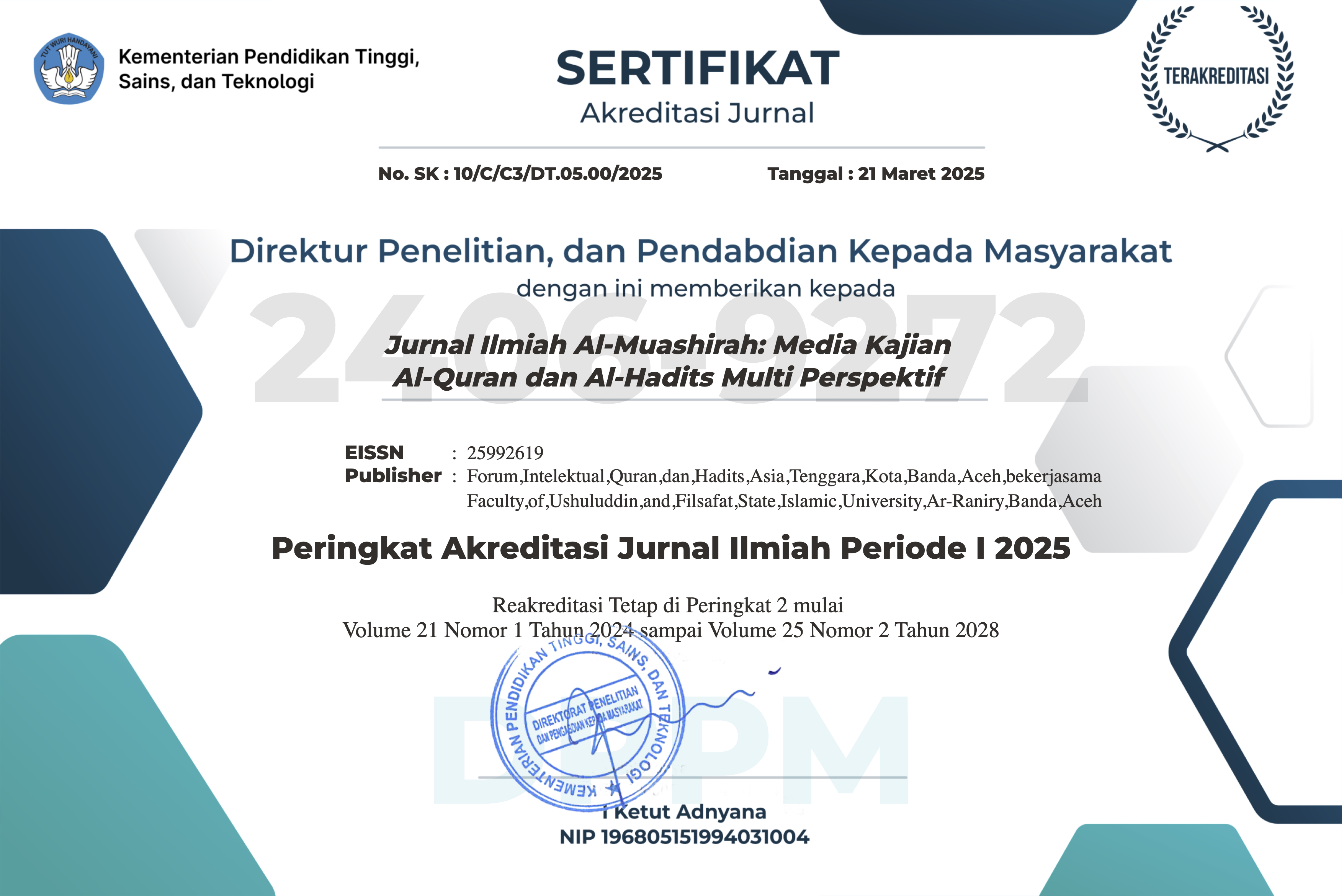Ri’ayah dalam Pandangan Islam
DOI:
https://doi.org/10.22373/jim.v18i2.10568Keywords:
Ri’ayah, Manfaat, Al-Qur’anAbstract
Islam consists of three main components: aqidah, worship and morals. These three components need to be harmonized in order to create harmony in religion. One of the things that need to be done in carrying out the religious component is to maintain it as well as possible. The nature of guarding and nurturing is called ri'ayah. The degrees of ri'ayah consist of ri'ayah al-a'mal (maintaining deeds), ri'ayah al-ahwal (maintaining circumstances) and ri'ayah al-awqat (maintaining time). Ri'ayah is done as proof of the sincerity of human self-servitude to Allah SWT and as a realization of the wisdom of its creation. The ultimate goal and the benefits derived from the maintenance is to get the pleasure of Allah SWT and His mercy in this world and the hereafter. Hadith of the Prophet Muhammad SAW also discusses this ri'ayah which is the reference for the people.
ABSTRAK
Islam terdiri dari tiga komponen utama, yakni akidah, ibadah dan akhlak. Ketiga komponen tersebut perlu diserasikan agar tercipta keharmonisan dalam beragama. Salah satu hal yang perlu dilakukan dalam melaksanakan komponen agama tersebut adalah memeliharanya dengan sebaik baiknya. Sifat menjaga dan memelihara tersebut dinamakan ri’ayah. Derajat ri’ayah terdiri dari ri’ayah al-a’mal (memelihara perbuatan), ri’ayah al-ahwal (memelihara keadaan) dan ri’ayah al-awqat (memelihara waktu). Ri’ayah dilakukan sebagai bukti kesungguhan penghambaan diri manusia kepada Allah swt. dan sebagai realisasi dari hikmah penciptaannya. Tujuan akhir dan manfaat yang didapatkan dari pemeliharaan tersebut adalah mendapat rida Allah swt. dan rahmat-Nya di dunia dan akhirat. Hadis Rasulullah saw. juga membahas tentang ri’ayah ini yang menjadi referensi umat dalam melaksanakannya.
Downloads
References
-Al-Qur’an Al -Karim
Al-Anshari, Abdullah. 1988. Manazil al-Sairin. Beirut: Dar al-Kutub al-‘Ilmiyyah.
Al-Baihaqi, Abu Bakr. tt. al-Madkhal ila al-Sunan al-Kubra li al-Baihaqi. Kuwait: Dar al-Khulafa’ li al-Kitab al-Islamiy
Al-Bukhari, Muhammad bin Ismail. 2002. Shahih al-Bukhari. Beirut: Dar Ibn Katsir
Al-Iskandari, Abd al-Mu’thi al-Lakhmi. 1954. Syarh Manazil al-Sairin. Kairo: Ma’had al-Ilmi.
Al-Muhasibi, al-Harits bin Asad. tt. Al-Ri’ayah li Huquqillah. Beirut: Dar al-Kutub al-Ilmiyyah.
Al-Qasani, Abd ar-Razzaq. tt. Syarh Manazil al-Sairin. Beirut: Muassasah at-Tarikh al-‘Arabiy
At-Tirmidzi. 1998. Sunan al-Tirmidzi. Beirut: Dar al-Gharb al-Islamy
Muslim. tt. Shahih Muslim. Kairo: Dar Ihya’ al-Kutub al-‘Arabiyyah, Tanpa Tahun.
Shidiq, Ghofar. 2009. “Teori Maqashid al-Syari’ah dalam Hukum Islam” dalam Jurnal Sultan Agung 118
Downloads
Published
Issue
Section
License
Authors who publish in Jurnal Ilmiah Al-Mu'ashirah agree to the following terms:
- Authors retain copyright and grant the journal right of first publication with the work simultaneously licensed under a Attribution-ShareAlike 4.0 International (CC BY-SA 4.0) License that allows others to share the work with an acknowledgment of the work's authorship and initial publication in this journal.
- Authors are able to enter into separate, additional contractual arrangements for the non-exclusive distribution of the journal's published version of the work (e.g., post it to an institutional repository or publish it in a book), with an acknowledgment of its initial publication in this journal.
- Authors are permitted and encouraged to post their work online (e.g., in institutional repositories or on their website) prior to and during the submission process, as it can lead to productive exchanges, as well as earlier and greater citation of published work (See The Effect of Open Access).













